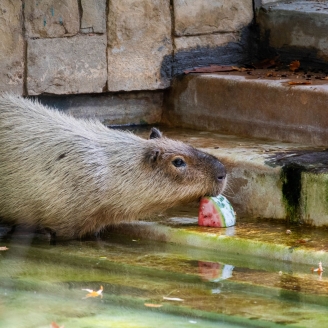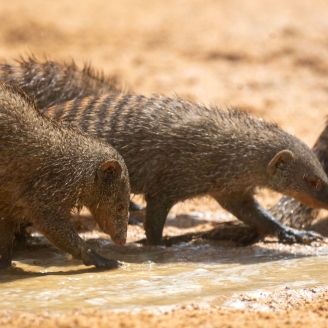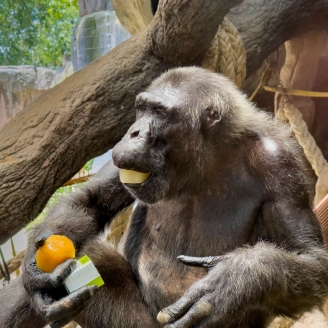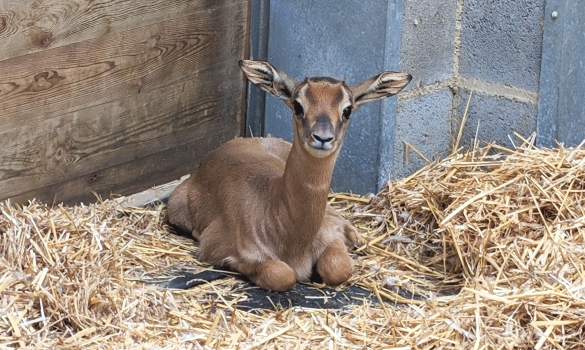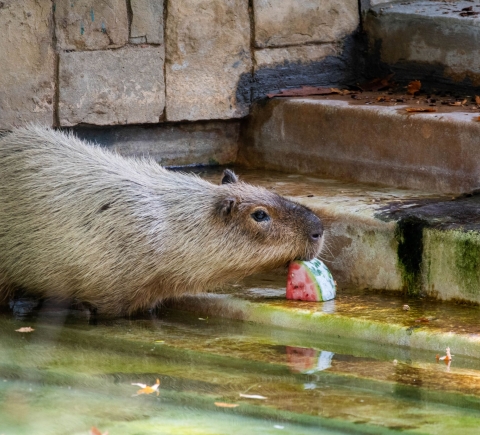

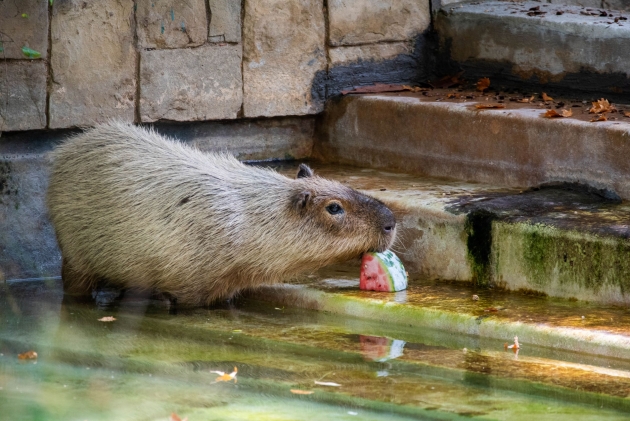
The Zoo’s keepers are adopting special measures to ensure the health and well-being of animals during episodes of intense heat
Increased refills of drinking troughs, free access to shelters in facilities and the inclusion of ice in the diet of some species are a few examples of the measures being implemented
The measures applied in response to the drought are helping to save 200 m3 of water every day
Putting animal well-being and health at the centre, Zoo de Barcelona is implementing special measures this summer to mitigate the effects of the rise in temperatures on its animals. These steps are increased during episodes of intense heat such as the one we are currently experiencing and complement the daily care routines that keepers provide for all the species at the Zoo.
While the abundance of vegetation ensures that average temperatures recorded at the Zoo are some three degrees below those in the rest of the city, when the heat really kicks in Zoo de Barcelona activates a special protocol with several measures aimed principally at stopping the effects that the heat can have on the various species.
According to Zoo de Barcelona’s director, Antoni Alarcon, “the measures we are presently taking are a further sign of Zoo de Barcelona’s firm commitment to the well-being of all the species found there, as well as an example of our rapid capacity for adapting to environmental changes”. The protocol for high temperatures means taking steps linked to the basic areas of animal well-being. “Among other things, we give priority to maintaining comfortable temperatures in habitats , strive to keep animals properly hydrated and take all the steps needed to ensure they can continue following their usual behaviour habits in the best possible conditions, such as bathing in the case of the most aquatic species”, he explains.
In contrast to what goes on at other times of the year, when temperatures are high, the Zoo ensures its animals can access the shelters or indoor areas of their enclosures whenever they wish, keeping the gates open at all times to reduce the effects of the heat.
Guaranteeing the animals are properly hydrated is another of the Zoo’s priorities. Its team of keepers refill drinking troughs more often to keep them fresh. They also increase the number of drinking troughs available to the animals. In addition, the Zoo steps up work to clean and replenish bathing areas that some species have in their enclosures, a practice repeated in mud patches, which play an important role regulating temperatures for animals such as warthogs, rhinoceroses and elephants.
In other cases, such as those of elephants, bison and forest buffalo, staff at the Zoo freshen up facilities with hose pipes. In some cases, such as the red pandas, this activity is carried out with sprinklers. In contrast, fans can be installed in feline and bear habitats to improve the condition of the air in their enclosures.
Food is another aspect that Zoo de Barcelona’s keepers adapt and take very much into consideration over the hotter months. Examples here include iced fruit and broth offered to the primates; fruit mixed with ice cubes for the giraffes; and worm-based iced drinks for the mongooses and meerkats.
The Zoo's commitment to sustainability and saving water
Zoo de Barcelona is implementing these measures despite the current drought, as its particular idiosyncrasies mean it is exempt from some of the water-saving measures in place under the drought risk protocol being applied by Ajuntament de Barcelona for the current exceptional situation. Despite this exemption, and consistent with its commitment to sustainability and reducing the impact of its activity, the Zoo has applied several measures which are helping to save 200 cubic metres of water a day, a quantity equivalent to the daily water consumption of 1,800 Barcelona residents.
As in many other spaces in the city, the Zoo is abiding by the restrictions on watering lawns and grasslands and also shutting down its ornamental fountains. Other measures include the introduction of a system to monitor water consumption in real time to detect possible leaks at any time, plus the closure of one of the two main water supply lines to the site, to reduce pressure and consumption. The Zoo generally opts to plant species of vegetation that are suited to the Mediterranean climate.


